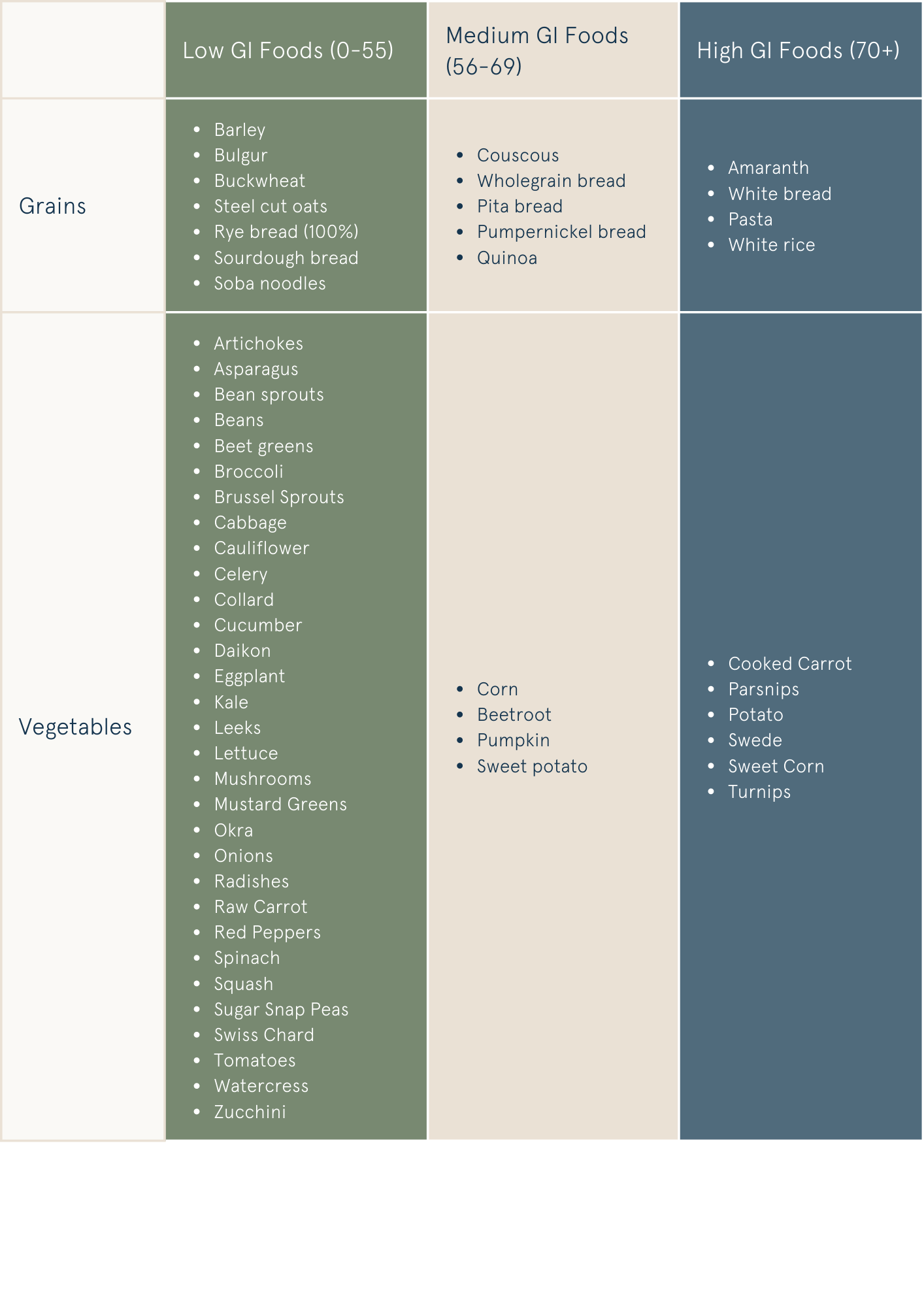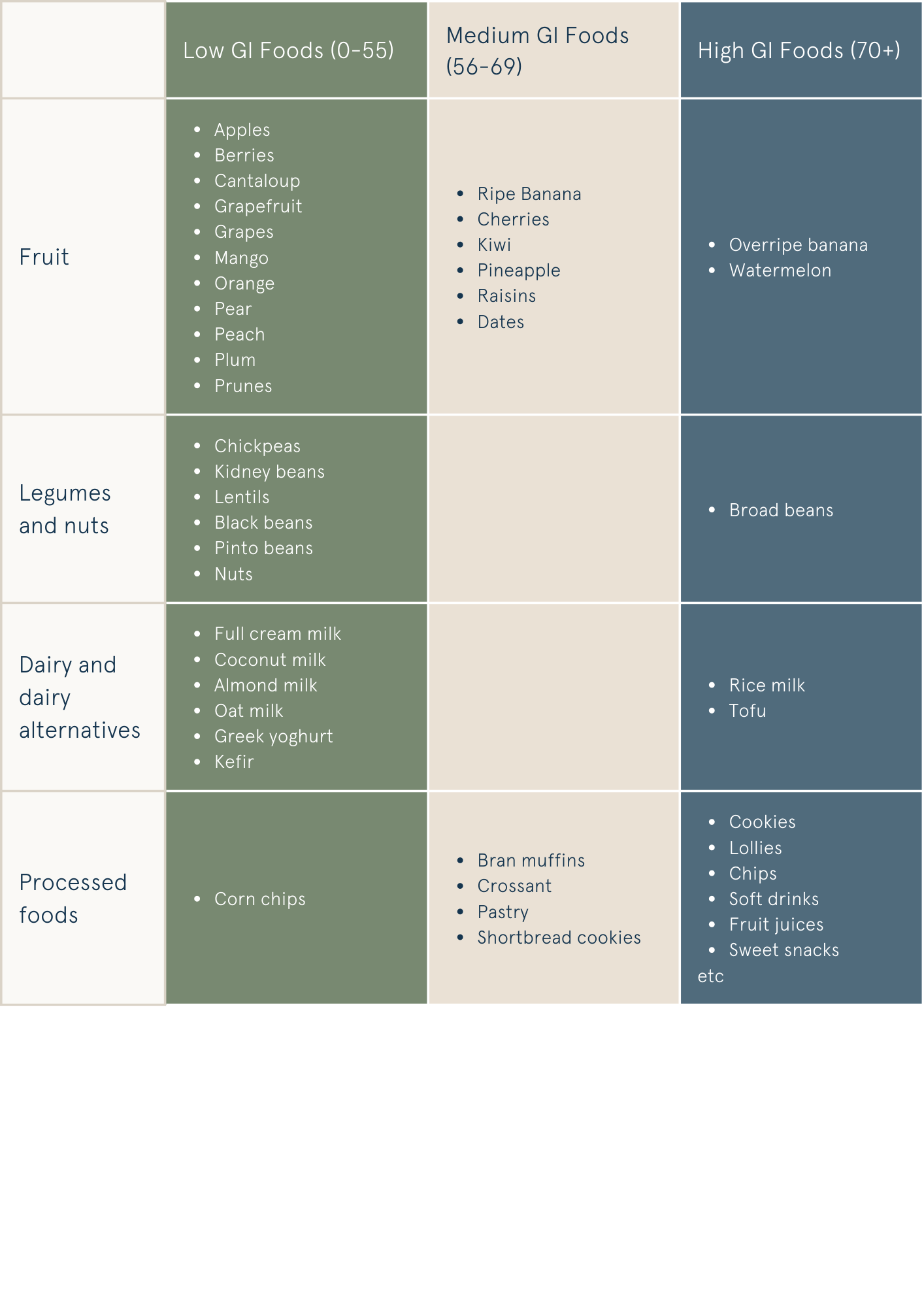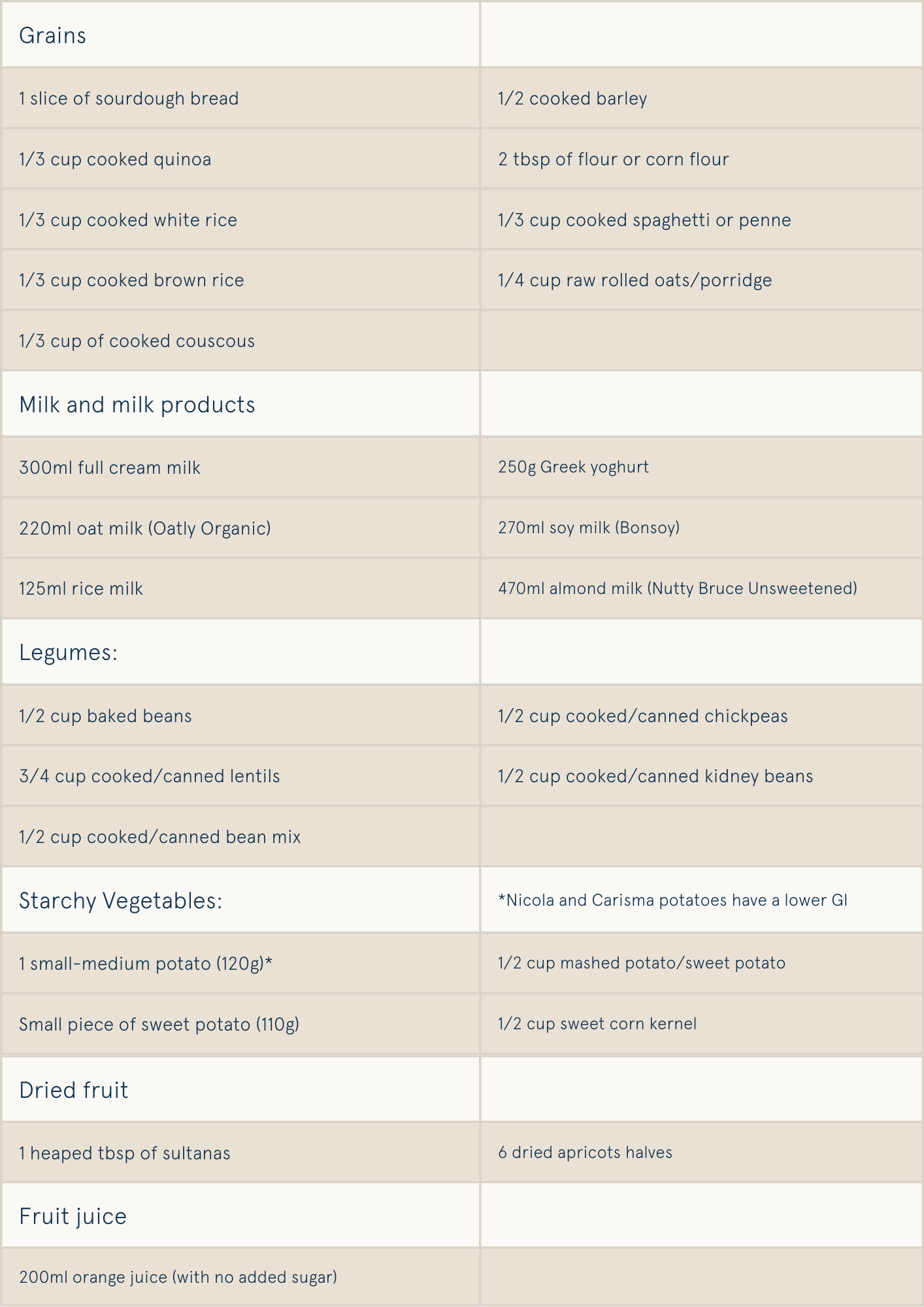What is the Glycemic Index (GI)?
All carbohydrate foods behave differently in our bodies and the Glycemic Index (GI) is a way to differentiate the ranking of foods according to their effect on our blood sugar levels. High GI foods produce high levels of blood sugar and when your diet mainly consists of these foods, the body produces more insulin (the hormone which controls the movement of glucose in and out of your blood) compared to when you eat lower GI foods.
So the GI of a food is the measure of the blood glucose-raising potential of the carbohydrate content of a food compared to a reference food like pure glucose/sugar. These foods are given a number and classified as either low, moderate or high.
High GI = 70 to 100
Medium GI = 50 to 70
Low GI = below 50
So think of this score as to how quickly a food is converted into sugar once you eat it!
What is the Glycemic Load (GL)?
Just to complicate matters GI is not the only thing that needs to be considered! When you eat responses to how your blood sugar levels behave in your body will also depend on how processed the food is, the fiber content in that food and what other types of foods you eat them with!
The glycemic load (GL) measures how certain foods impact blood sugar levels using the glycemic index and the amount of carbohydrates in a meal. This takes into account the quality and quantity of carbohydrates and that influence on blood sugar control.
This is also rated!
High GL = 20 +
Medium GL = 11 to 19
Low GL = 10 or less
Why eat a low GI/GL diet?
Well, there are many beneficial effects on the body when you eat diets low in carbohydrates and foods with a low glycemic index. These diets are effective in managing chronic diseases.
Low GI Foods:
- are able to balance blood glucose levels more effectively than other diets and particularly in those with type 2 diabetes
- control appetite and delay hunger
- may help prevent heart disease, diabetes, obesity, hypoglycemia, hyperinsulinemia, chronic diseases
- may help maintain and lose weight
In contrast high GI foods:
- can cause carbohydrate cravings and increase appetite
- cause significant fluctuations in blood sugar and insulin levels, which can cause a vicious cycle of overeating
Examples of foods depending on their GI index


List of common foods and GI index and GL load


Carbohydrate Serves
Keeping control of your carbohydrate intake can benefit some people with diabetes or people who are limiting their carbohydrate intake. It is a good way to achieve a consistent intake of carbohydrates and control portion sizes or match insulin to food intake. The amount of carbohydrates needed for each person is different so discuss with your practitioner to determine your optimal level.
The table below shows foods that contain approximately 15g of carbohydrates.


Following the principles of low-glycemic-index eating is beneficial to health. Reaching and staying at a healthy weight is critical to the goal of overall health and understanding glycemic foods contribute to that aim! Ultimately once you have practised and trained yourself through this process you will develop a way of eating that does not require you to micromanage your food.
Want to understanding more about insulin please check out our blog on this hormone here!
Check “The Sugar Film” as well!
Enjoy and Have fun with these foods!
Maria
🙂
References:
“International tables of glycemic index and glycemic load values: 2008” by Fiona S. Atkinson, Kaye Foster–Powell
Jennie C. Brand–Miller in the December 2008 issue of Diabetes Care, Vol. 31, number 12, pages 2281–2283
https://extension.oregonstate.edu/sites/default/files/documents/1/glycemicindex.pdf
https://academic.oup.com/ajcn/article/114/5/1625/6320814
https://www.mdpi.com/2072-6643/11/2/459/htm
https://link.springer.com/article/10.1007/s10549-011-1343-3
https://academic.oup.com/nutritionreviews/article/58/6/163/1838374?login=true
https://pubmed.ncbi.nlm.nih.gov/29562676/

